3D character Artist Piotr Rusnarczyk in Poland talks about freelancing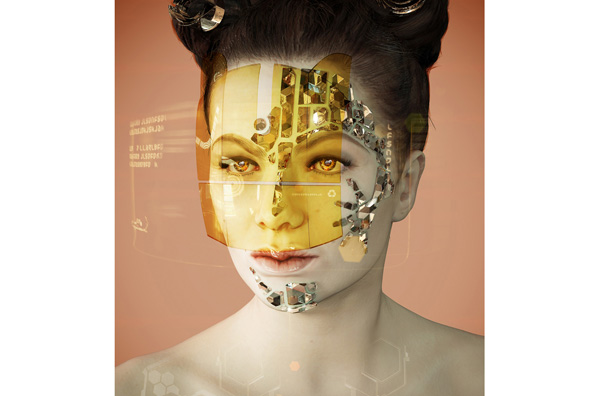 for games studios, managing model rendering, and navigating the
for games studios, managing model rendering, and navigating the
cyberpunk world through his own projects.
3D Character Artist Changes the Game with Light & Inspiration |
|
Piotr Rusnarczykis a freelance computer graphics artist living in Warsaw, Poland. His involvement with 3D graphics began in 1998, and now his professional work is mainly devoted to game art. He was still a student when he found his first job in a graphic art studio, where he gained skills in the essential software that he still uses now. Zbrush, KeyShot, Maya, Modo and Photoshop are his everyday working tools. |
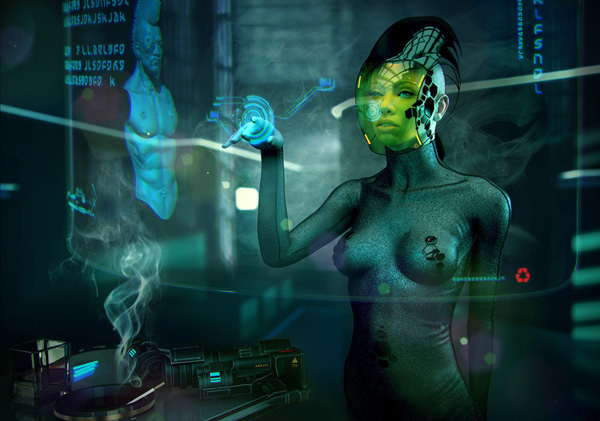 |
|
Character ExplorationPiotr works with animators every day at Flying Wild Hog, where they build characters for games. As they work together to make the character look as flawless as possible, they find the animation work needs to start at the stage of creating a concept. “This is when the core decisions are made – for example, should the model be hand animated or should we let the motion capture studio handle it?" Piotr said. “Sometimes we’ll scrap fairly good ideas because they would be too problematic to animate, and wouldn't end up looking convincing anyway. Sometimes I add some of my own ideas at the sculpting stage and then consult with the animators when topology errors occur. It doesn't happen often, but saves us time for polishing the model.” |
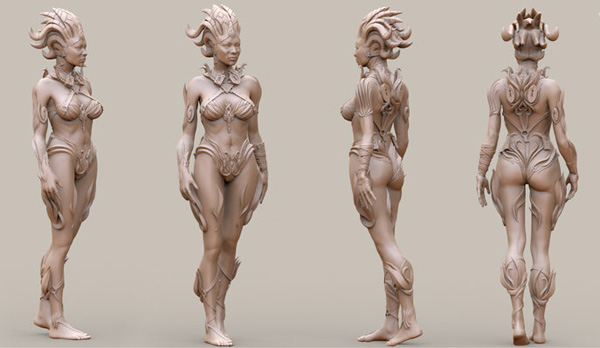 |
|
Designed to produce images from 3D models, KeyShot helps artists assess and make decisions about their work, or create quick variations of concepts for clients. It has about 700 scientifically accurate materials in a material library, which the artist copies and pastes onto their model and combines with an HDRI image to change the lighting environment. This shows the effect of real world lighting, captured in those environments, on materials. Similar to using a real camera, you can change the camera angle, distance and tilt, control perspective with focal length and field of view settings or add depth of field. You can also check looks with different backgrounds. |
 |
Photo AtelierWhen he started working with the new version of KeyShot, KeyShot for Zbrush, prior to its release, he liked it straightaway and found that working in it is like working in a classic photo atelier. “Light is a game changing tool. We can entirely transform the look of our work just by toying with light. We can use it to downplay the flaws, or to make some things pop out. The program automatically loads its own HDR map, startup.hdr, which I really like for getting started,” he said. “I test my models first without additional lights. The default HDRI map is good for this, and then if I want to light the model in a way that makes the shape stand out, I add a lot of contrast. Shadows sculpt the shape. I use maps which contain dark floors for this so that the lighting comes from above the model. I can do everything I want later using light and materials, but starting with an evenly lighted model is crucial. I can also create my own HDRI maps. Using the HDRI Editor, I can create a library of unique maps and combine HDRI maps with lights in a scene, which gives amazing results.” Piotr feels that rendering practice is key, and has changed in the time that he has been working in computer graphics. In the past, before painting and texturing in modelling software was prevalent, overpainting was more common than it is now. Overpainting is a method used in 2D and even 3D artwork where the artist takes photos or renders into 2D software like Photoshop and paints over them, using them as a base, to achieve the desired look. |
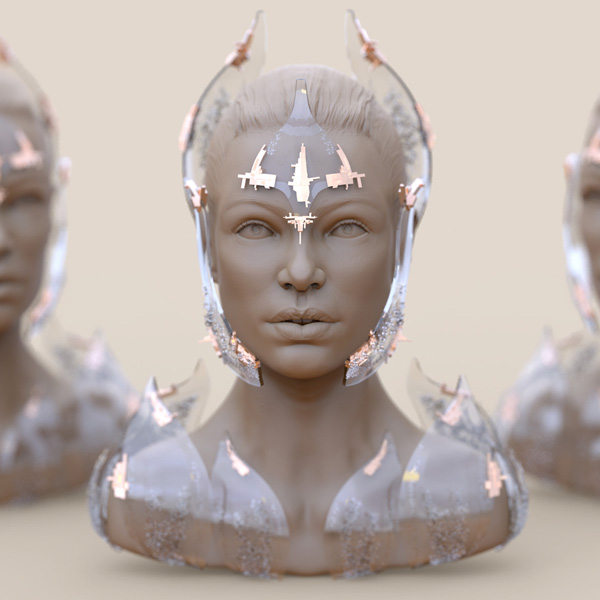 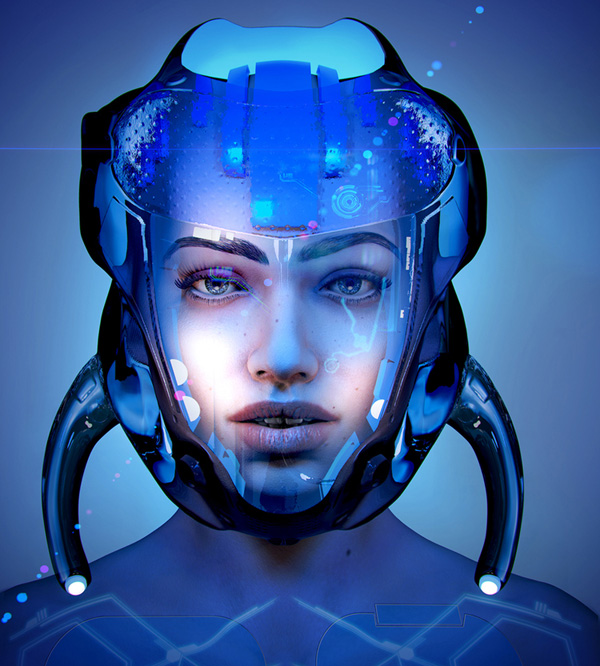 |
|
Cyberpunk StyleIn his own work, Piotr pursues the cyberpunk style, a look that is in demand right now for games and visuals. He said, “My fascination with cyberpunk started years before it became common computer game fare. At that time, the early 2000s, ‘Armitage Dual Matrix’ was burned on laser discs and distributed among friends, and broadband internet had yet to become a basic feature of every household. At the same time I was reading the works of Stanislaw Lem, our Polish forerunner of cyberpunk and a great futurist. What I like best about cyberpunk are the questions that it asks, such as where is the line between man and machine? What makes a man a man if a part of him, or even most of him, is actually artificial? Those great questions may soon be ours." |
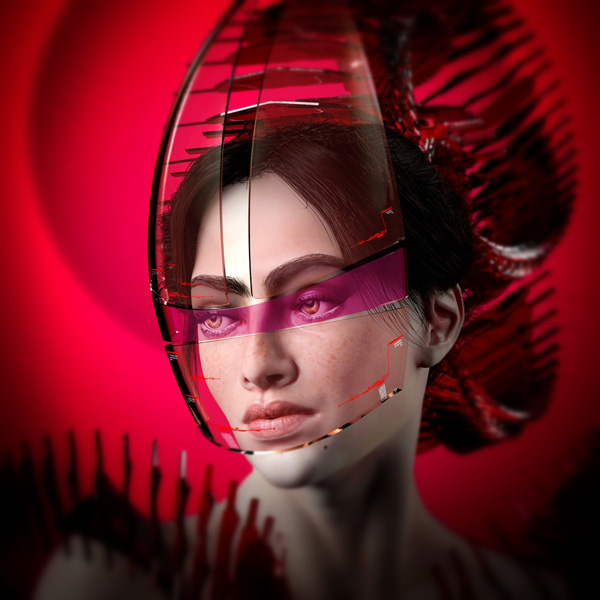 |
|
“I was trying to find an interesting design treating tech gear as jewellery as a way of creating something pleasing and useful at the same time,” said Piotr. “It occurred to me as I was travelling on the subway and saw women playing with their smartphones and imagined how those devices might look in the near future. Already we have Google Glass, which connects you with the Web and is a fashion accessory and communication device at the same time. Gizmos and Fashions“Imagining possible upgrades of such gizmos is a lot of fun, especially when you combine it with female beauty - a primary source of inspiration to me since the beginning. There is nothing in the world as beautiful as a body of a woman, full stop - but I don't overthink that inclination. I just follow my fascinations and try to share them with the viewer. I follow haute couture designers’ ideas on a regular basis - the fashion aspect is more important to me than the technical details of all the gear I put on women's faces. The ‘Connections’ project hasn't been closed yet!” |
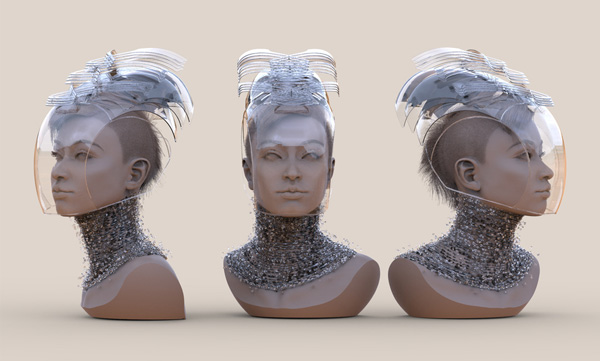 |
|
Talking about his early influences, reference and inspirations, he explained that his formal studies at Cracow’s Fine Arts Academy mostly concerned classic photography. “My father inspired me to walk this path when I was very young, and a camera has been among my major work tools for years,” he said. “I’m thinking of creating a 3D scanner and basing my future projects on scans. I don't consider this is a ‘cheat’. This tool can be used creatively, just as any other. We base our realistic projects on photos anyway - so why not make the job easier? Most of the time, I use photography in order to ensure that the model will look realistic, though sometimes I only start with my imagination or little details from my memory. Lately I use illustrations, too, and of course good music - it's crucial as a background.www.sexy-polygons.com |


















